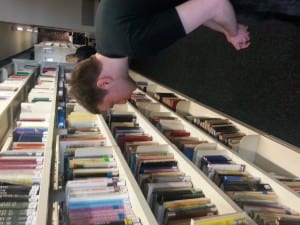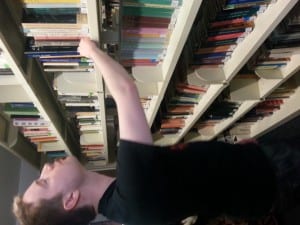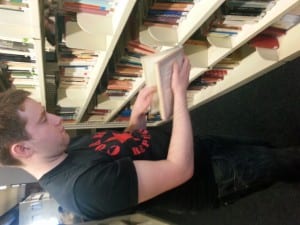https://www.youtube.com/watch?v=_zF5Ys2Pw3c&feature=youtu.be
On Wednesday the 18th of February, we were asked to test out our idea for our final performance. Our idea is that during the day we set people who want a piece of food, a question or a riddle which relates to a certain book title or passage in the library. The reward for the correct answer is a snack of some kind.
In our miniature version, we tested out an example of a question and reward system with the groups in our class. Everyone in our group came up with a different question to test on the other groups. My task was: “Find a book that was written by a Drama Lecturer at the University of Lincoln in under 15 minutes”. The premise being that, even though we as students are taught by these lecturers, we are unaware of their work and how it is kept within the University Library. The group had to find the book without resorting to the dependency of technology and the search tablets within the library. Unfortunately the task turned out to be a lot easier than I had intended it to be, within no time at all they had found 1 of the 10 known books which were in the library. So, I gave them an additional task to try and find another book by a drama lecturer… which they did just as quickly as the one they found the one earlier. The group were very pleased with themselves, deservedly so, and were rewarded with their snack – a bag of sweets.
The simple idea behind the task is that students are motivated to learn through a physically active game as well the prospect of free food as an award. In my mind, it builds upon the idea of both: the metaphor “Food for Knowledge”, and the student food-reward system (where a student rewards themselves with food if they have completed the amount of work on their essay that they have done)
Paul Chappel


